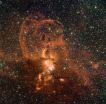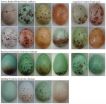(Press-News.org) A new MRI device that guides surgeons as they implant electrodes into the brains of people with Parkinson's disease and other neurological disorders could change the way this surgery, called deep brain stimulation, is performed at medical centers across the country, according to a group of doctors at University of California, San Francisco.
Deep brain stimulation can help to alleviate patients' symptoms, and the new device will make the procedure faster and more comfortable for the patient. It grew out of a home-grown technique developed by a team of UCSF neurosurgeons and radiologists at UCSF.
"It's an evolutionary step in the way these surgeries are done," said UCSF neurosurgeon Paul Larson, MD, who will present initial test data on the new device today at the 79th Annual Scientific Meeting of the American Association of Neurological Surgeons in Denver. Larson was part of the team that developed the technique, with Alastair Martin, PhD and Philip Starr, MD, PhD.
UCSF is the first hospital to test this device, manufactured by the Southern California company Surgivision and approved by the U.S. Food and Drug Administration last summer. UCSF's initial test results were collected in six mock surgeries on three cadaver brains and on dozens of artificial targets made of water- and gelatin-filled plastic.
Deep Brain Stimulation
Parkinson's disease affects about 1 percent of the U.S. population over 50 – about 1.5 million people – a population expected to increase as Baby Boomers age.
Many with severe symptoms from Parkinson's disease have benefited from deep brain stimulation – similar to putting a pacemaker inside a heart patient's chest. Over the last decade, doctors have performed tens of thousands of these surgeries; medical teams at UCSF perform about two a week.
Scientists aren't sure why deep brain stimulation works, but they believe it relates to the electric current being delivered to tiny parts of the brain, altering abnormal brain circuitry and alleviating symptoms by overriding the signals coming from those parts of the brain. One crucial part of the technique is accurately targeting the appropriate part of the brain.
Traditionally the surgery takes place with the patient awake so that brain activity can be fully monitored. A surgeon bolts a metal frame to a patient's head and then passes a small electrode into the target area in the brain, making recordings and testing the effect of patient movement on brain activity.
The New Technique
In 2004, the UCSF team developed a way to guide the placement of these electrodes while the patient was inside an MRI scanner. A standard MRI can show hi-res structures deep inside the brain, and surgeons can use these images to more accurately place the electrodes, potentially cutting the surgery time in half. Because the recording and testing step with smaller electrodes is eliminated from the process, it can also be done while the patient is asleep.
Despite these advantages, the original technique relied on specially modified parts and procedures unique to UCSF rather than a commercially available system. Any hospital that wanted to use this technique would have to develop its own homemade system. As a result, Larson said, "We were the only people in the world doing it."
Now with the availability of the new device, he predicts, more medical centers will start to use MRI to guide deep brain stimulation.
"The system provides the accuracy and reliability for us to do these operations safely and effectively," Larson said.
INFORMATION:
The study was funded by Surgivision. Neither UCSF nor any of the doctors involved in the study have any financial interest in the Surgivision device.
Follow UCSF on Twitter @ucsf/@ucsfscience
UCSF neurosurgeons test new device for placing brain implants
2011-04-14
ELSE PRESS RELEASES FROM THIS DATE:
Celestial fireworks from dying stars
2011-04-14
NGC 3582 is part of a large star-forming region in the Milky Way, called RCW 57. It lies close to the central plane of the Milky Way in the southern constellation of Carina (The Keel of Jason's ship, the Argo). John Herschel first saw this complex region of glowing gas and dark dust clouds in 1834, during his stay in South Africa.
Some of the stars forming in regions like NGC 3582 are much heavier than the Sun. These monster stars emit energy at prodigious rates and have very short lives that end in explosions as supernovae. The material ejected from these dramatic events ...
Long-sought fossil mammal with transitional middle ear found
2011-04-14
Paleontologists from the American Museum of Natural History and the Chinese Academy of Sciences announce the discovery of Liaoconodon hui, a complete fossil mammal from the Mesozoic found in China that includes the long-sought transitional middle ear. The specimen shows the bones associated with hearing in mammals— the malleus, incus, and ectotympanic— decoupled from the lower jaw, as had been predicted, but were held in place by an ossified cartilage that rested in a groove on the lower jaw. The new research, published in Nature this week, also suggests that the middle ...
City of Gold Continues to Boost Weekend Free Bingo Specials at City Bingo
2011-04-14
Free bingo site City Bingo has stepped up its devotion to providing its players with an array of weekend special and promotions. The metropolitan bingo site already offers 70% bonuses on Saturdays and 80% bonuses on Sundays and has now added The Bingo Avenue Tournament.
Players depositing at weekends had already been enjoying the aforementioned bonuses on their deposits and the introduction of their latest game is likely to keep the site buzzing. The new feature involves players picking numbers that they don't think will come up in a draw, they can swap any points accrued ...
An advance for a newborn vaccine approach
2011-04-14
Infectious disease is a huge cause of death globally, and is a particular threat to newborns whose immune systems respond poorly to most vaccines. A new approach developed at Children's Hospital Boston, using an adjuvant (an agent to stimulate the immune system) along with the vaccine, shows promise in a study of blood from Gambian infants. Results will appear in the open-access journal PLoS ONE on April 13.
The ability to immunize newborns would close their window of vulnerability to serious infections during the first months of life, such as respiratory syncytial ...
Understanding Your Breast Reconstruction Options: Autologous Tissue
2011-04-14
If you have been diagnosed with breast cancer that requires surgery, the time to consider reconstruction options is now, even before you schedule your mastectomy or lumpectomy. Because the type of mastectomy procedure you receive can have a significant impact on your reconstruction options, failing to consider your options early can limit them later.
Getting breast reconstruction is optional, it is not required, and some women find that life without breasts is freeing. However, if you would prefer to maintain your feminine appearance, breast reconstruction is a far ...
Biological arms races in birds result in sophisticated defenses against cuckoos
2011-04-14
VIDEO:
The film clip shows a nest of the most frequent host of the cuckoo finch, the tawny-flanked prinia, which has an extravagantly diverse range of eggs. The prinia parent has...
Click here for more information.
New research reveals how biological arms races between cuckoos and host birds can escalate into a competition between the host evolving new, unique egg patterns (or 'signatures') and the parasite new forgeries.
Brood parasitic birds such as cuckoos lay eggs ...
What Should I Do After a Car Accident in Georgia?
2011-04-14
The moments immediately following a serious auto accident can be overwhelming and scary, especially if someone suffers serious personal injury or death. Oftentimes, people are in a state of shock and not thinking clearly following a horrific car accident, but the moments immediately following the accident are critical to the outcome of a personal injury claim that may be filed later.
For this reason, even though you will be overwhelmed and frightened, it is important that you take certain steps after a car accident and never admit fault at the scene of the accident ...
Plasma nanoscience needed for green energy revolution
2011-04-14
A step change in research relating to plasma nanoscience is needed for the world to overcome the challenge of sufficient energy creation and storage, says a leading scientist from CSIRO Materials Science and Engineering and the University of Sydney, Australia.
Professor Kostya (Ken) Ostrikov of the Plasma Nanoscience Centre Australia, CSIRO Materials Science and Engineering, has highlighted, in IOP Publishing's Journal of Physics D: Applied Physics, the unique potential of plasma nanoscience to control energy and matter at fundamental levels to produce cost-effective, ...
Correcting Severe Dental Problems
2011-04-14
The modern cosmetic dentist is increasingly able to correct severe dental problems more comfortably and in less time. Treatment options are available for everything from repairing or replacing a tooth to realigning your jaw. It is important to pay attention to any discomfort as it may be a sign of an undiscovered issue.
Preventing and Treating Tooth Erosion
Frequent visits to your dentist combined with healthy oral hygiene at home are the best preventions for dental problems. Serious infection can occur from a damaged tooth that goes undetected. While teeth naturally ...
Stillbirths: The invisible public health problem
2011-04-14
Some 2.6 million third trimester stillbirths worldwide occur every year, according to the first comprehensive set of stillbirth estimates, published today within a special series in the medical journal The Lancet.
Every day more than 7,300 babies are stillborn. A death occurs just when parents expect to welcome a new life.
Ninety-eight percent of stillbirths occur in low and middle-income countries. Wealthier nations are not immune with 1 in 200 pregnancies resulting in a stillbirth - two thirds occurring in the last trimester of pregnancy, a rate that has stagnated ...




